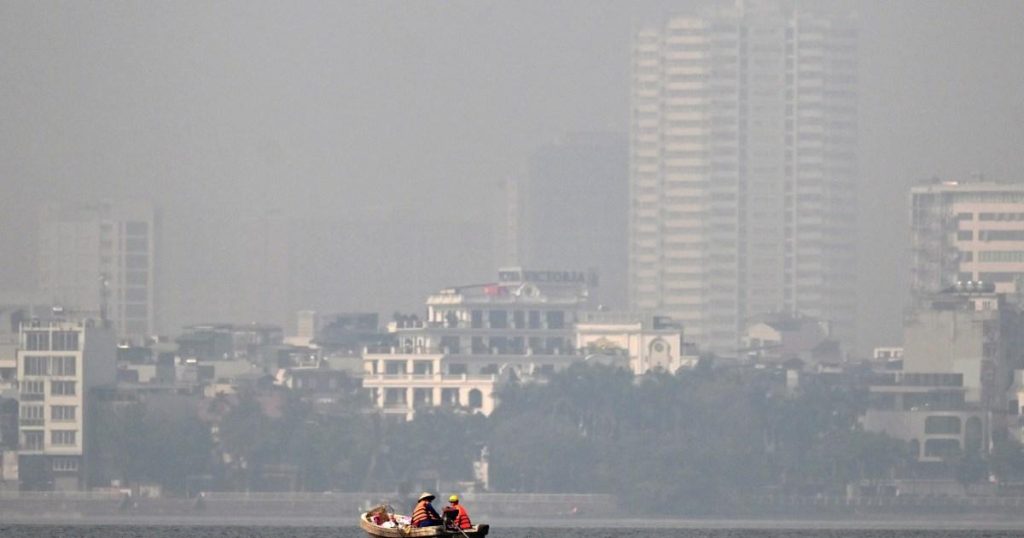Hanoi’s Air Pollution Crisis: A Choking Reality
Hanoi, Vietnam’s vibrant capital, recently experienced a disturbing environmental crisis, claiming the grim title of the world’s most polluted city. For a brief but alarming period, the city’s air quality plummeted to hazardous levels, exceeding those of notorious pollution hotspots like Delhi and Dhaka. This unprecedented event exposed the stark reality of Hanoi’s ongoing struggle with air pollution, a persistent challenge fueled by rapid urbanization, industrial growth, and outdated infrastructure. The crisis, while temporary in its extreme severity, serves as a stark reminder of the urgent need for comprehensive and sustainable solutions to address the city’s air quality woes.
The severity of the pollution was starkly illustrated by the alarmingly high levels of PM2.5, microscopic particles that pose significant health risks. Measurements reached a staggering 266 micrograms per cubic meter, far exceeding the World Health Organization’s recommended safe limit. These insidious particles, small enough to penetrate deep into the lungs and enter the bloodstream, are linked to a range of respiratory and cardiovascular illnesses, as well as an increased risk of cancer. The city’s skyline, typically vibrant, was shrouded in a thick, hazardous smog, a visible testament to the invisible threat permeating the air. Residents, accustomed to periods of poor air quality, found themselves struggling to breathe, with many experiencing exacerbated respiratory problems. The elderly and children, particularly vulnerable to the effects of air pollution, faced even greater risks.
The primary culprits behind Hanoi’s air pollution crisis are a complex interplay of factors, primarily stemming from the city’s rapid development and modernization. Heavy traffic congestion, with its constant stream of exhaust fumes, is a major contributor. The burning of trash, a common practice in many parts of the city, further exacerbates the problem, releasing harmful pollutants into the air. Industrial activities, both within the city and in surrounding areas, also play a significant role, spewing industrial emissions into the already polluted atmosphere. The combination of these factors creates a vicious cycle, trapping pollutants within the city and creating a persistent haze that blankets Hanoi, particularly during the winter months when atmospheric conditions worsen.
The government, recognizing the urgency of the situation, has begun to implement measures aimed at mitigating the air pollution crisis. A key focus has been on transitioning to cleaner transportation options, with a particular emphasis on electric vehicles. Targets have been set for a significant portion of the city’s bus fleet and taxis to be electric by 2030. While this is a positive step, the timeline for achieving these goals raises concerns about the immediate effectiveness in addressing the current crisis. Furthermore, the successful implementation of such initiatives will require significant investment in infrastructure and public awareness campaigns to encourage adoption.
Beyond electric vehicles, a broader, more holistic approach is needed to tackle the root causes of Hanoi’s air pollution. This includes stricter regulations on industrial emissions, promoting sustainable waste management practices, and investing in green spaces within the city. Public awareness campaigns are crucial to educate residents about the health risks associated with air pollution and encourage individual actions to reduce their contribution to the problem. This could include promoting the use of public transportation, cycling, and walking, as well as discouraging the burning of trash.
The recent crisis in Hanoi serves as a stark warning sign, not just for Vietnam, but for rapidly developing cities around the world. The relentless pursuit of economic growth and modernization must be balanced with a commitment to environmental sustainability. Failing to do so will result in a heavy price to pay, measured not only in economic terms but also in the health and well-being of citizens. The fight against air pollution requires a sustained, multi-pronged approach involving government action, corporate responsibility, and individual participation. Only through collective effort can cities like Hanoi hope to breathe cleaner air and ensure a healthier future for their residents.
The international community also has a role to play in supporting Hanoi’s efforts to combat air pollution. Sharing best practices, providing technical assistance, and promoting sustainable development initiatives can contribute to finding effective solutions. Collaboration between governments, international organizations, and research institutions is essential to developing and implementing innovative strategies to address this global challenge. The air pollution crisis in Hanoi highlights the interconnectedness of environmental issues and the need for global cooperation to protect the health of our planet and its inhabitants. The time for action is now, before the consequences of inaction become irreversible.











